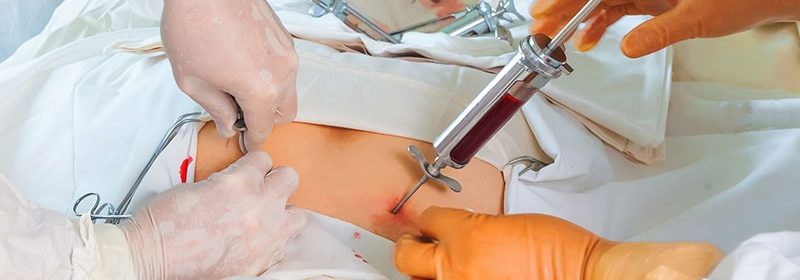Stem Cell Transplant Trumps Fingolimod for RRMS Relapse Risk

Patients with relapsing-remitting multiple sclerosis (MS) treated with autologous hematopoietic stem cell transplantation (AHSCT) were 74% more likely than those taking fingolimod (Gilenya) to be relapse-free 1 year after treatment, a new study suggests.
The multicenter observational study also showed that AHSCT was associated with a better overall annual relapse rate and significantly greater disability improvement vs fingolimod. Stem cell transplantation also offered a slight advantage compared with natalizumab (Tysabri) but showed no benefit over ocrelizumab (Ocrevus).
“Based on these results, we can conclude that in this observational study AHSCT is substantially superior to fingolimod and marginally superior to natalizumab in reducing the risk of posttreatment relapses,” study investigator Tomas Kalincik, MD, PhD, told delegates attending the 38th Congress of the European Committee for Treatment and Research in Multiple Sclerosis (ECTRIMS) 2022.
Research Gap
As previously reported by Medscape Medical News, studies suggest that AHSCT is associated with better disability outcomes than other immunotherapies in patients with active secondary progressive MS. Findings from another study on long-term efficacy in relapse prevention are also promising.
“The information that we are still lacking is the head-to-head comparison of the effectiveness of AHSCT in relapsing-remitting disease to concrete, highly effective therapies, which is the aim of this current study,” said Kalincik, professor of neurology at the University of Melbourne and head of the Multiple Sclerosis and Neuroimmunology Service at the Royal Melbourne Hospital, Australia.
The study included 167 patients with RRMS from six centers in Ottawa, Uppsala, Sheffield, Bergen, Sydney, and Melbourne, combined with patients from MSBase.
Patients were included if they were treated with AHSCT or fingolimod (n = 769), natalizumab (n = 730) or ocrelizumab (n = 343).
Researchers used propensity matching to ensure the AHSCT and disease-modifying therapy (DMT) groups had similar relapse rates and disability scores at baseline.
At 1 year, patients who underwent AHSCT were 74% more likely than those on fingolimod to be relapse-free. (HR, 0.26; P < .0001).
The AHSCT group also had a lower overall annualized relapse rate (0.09 vs 0.19, respectively; P < .0001) and a higher cumulative probability of remaining relapse-free at 2 years (90% vs 68%, respectively) and 5 years (85% vs 54%, respectively).
AHSCT was also associated with significantly better confirmed disability improvement at 6 months compared to fingolimod (HR, 2.70; P < .0001).
Researchers also found better outcomes with AHSCT compared to natalizumab, but the results weren’t as promising. The annual relapse rate with AHSCT was statistically significant (P = .03) but the clinical benefit was marginal, Kalincik said. However, the confirmed disability improvement was significantly better with AHSCT (HR, 2.68; P < .0001).
There was no significant difference in outcomes with AHSCT compared to ocrelizumab.
Adverse events were common with stem cell transplantation, a sticking point for at least one conference attendee who raised safety concerns. Among those treated with AHSCT, 23% had febrile neutropenia, 11% had serum sickness, and 36% experienced complications after discharge, mostly infection. There was one AHSCT treatment-related death.
“We’re showing that AHSCT is a highly potent therapy that definitely is competitive vis a vis the most potent standard conventional disease modifying therapies,” said Kalincik, who noted the high rate of adverse events. Still, treatment-related mortality from AHSCT has improved since the therapy was first used in MS patients, he added.
“I’m hoping the data provides some evidence to convince you that this treatment still has a place in our armamentarium,” Kalincik said.
Questions Remain
Commenting on the findings for Medscape Medical News, Eva Kubala Havrdová, MD, PhD, professor of neurology in the Multiple Sclerosis Center at Charles University in Prague, Czech Republic, said the results add to a growing body of data on the efficacy of AHSCT in patients with highly active relapsing-remitting MS, but questions remain.
“It is important to understand that AHSCT provides advantage in terms of effectiveness compared to most of the DMTs,” Kubala Havrdová said. “However, it is a therapy associated with high risk of adverse events and this needs to be considered when one decides whether other, less invasive options have been exploited.”
Study funding was not reported. Kalincik reports he has served on scientific advisory boards for BMS, Roche, Janssen, Sanofi Genzyme, Novartis, Merck, and Biogen; steering committee for Brain Atrophy Initiative by Sanofi Genzyme; received conference travel support and/or speaker honoraria from WebMD Global, Eisai, Novartis, Biogen, Sanofi-Genzyme, Teva, BioCSL, and Merck; and received research or educational event support from Biogen, Novartis, Genzyme, Roche, Celgene, and Merck. Kubala Havrdová reported no relevant financial relationships.
38th Congress of the European Committee for Treatment and Research in Multiple Sclerosis (ECTRIMS) 2022: Abstract 0019. Presented October 26, 2022.
For more Medscape Neurology news, join us on Facebook and Twitter
Source: Read Full Article